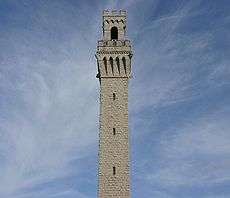Charles Amos Cummings


Charles Amos Cummings (1833–1905)[1] was a nineteenth-century American architect and architectural historian who worked primarily in the Venetian Gothic style. Cummings followed the precepts of British cultural theorist and architectural critic John Ruskin (1819–1900). Cummings help to found The Boston Society of Architects in 1867.
Biography
Born in Boston, Cummings was educated in the Boston Public Schools. Cummings graduated from the Rensselaer Polytechnic Institute in Troy, New York. Returning to Boston, Cummings joined the office of architect Gridley Bryant, where he met Willard T. Sears. In 1861 the two left Bryant's office to form their own architectural studio, Cummings and Sears.
Cummings traveled extensively in Europe, primarily Italy. Travel, and writing about Italian architecture informed his own work, and while a part of the larger Gothic Revival style, Cummings and his partner Sears were not rigorous academic revivalists.
Two early projects of the firm, Brechin Hall built in 1861, and Stone Chapel built in 1867 both at Phillips Academy in Andover, Massachusetts brought positive notice, and increased commissions to the firm. The office designed the massive brick Boston Cyclorama built to exhibit a large cyclical mural The Battle of Gettysburg, today it houses the Boston Center for the Arts. Just down the block from the Cyclorama building, the firm designed the Tremont Livery Stable at 439 Tremont Street. In 1872 the firm designed a large Stick Style residence at 121 Commonwealth Avenue in Boston's Back Bay, and the smaller but significant Pratt House in Forest Hills, also in the Stick Style.
Following Boston's Great Fire of 1872, the firm was enlisted in the reconstruction of many downtown buildings. A significant part of Cummings and Sears practice focused on ecclesiastical architecture, building churches throughout Massachusetts and northern New England. In 1874 Cummings was commissioned to design what is considered his masterwork, a new building for the third oldest congregation in America, Old South Church in Boston located in Boston's Copley Square. Also completed in the same year was the Bedford Block which is an example of Venetian Gothic architecture.
Cummings continued to work, almost until his own death in 1911. His last major commission was the design of the Pilgrim Monument in Provincetown, Massachusetts. The monument took the form of a 220' tower, built as an Italian campanile specifically modeled after the Torre del Mangia in Siena, Italy. The monument's cornerstone was dedicated in 1907 by Theodore Roosevelt and the completed building dedicated in 1910 by William Howard Taft.
Cummings collected a vast number of medieval sculptures, and on his death bequeathed the collection to the Museum of Fine Arts, Boston, also funding the Charles Amos Cummings Bequest Fund for the collection and care of ancient sculpture for the museum.
Publishing
Cummings wrote several treatises on Italian architecture. In 1901 he published his largest work A history of architecture in Italy from the time of Constantine to the dawn of the renaissance with over 500 illustrations. In the same year, with Russell Sturgis, he published the Dictionary of Architecture and Building, which became a standard architectural text book.
Notes
- ↑ Maine, Vital Records, 1670-1907, Death Record
References
- Aldrich, Megan. Gothic Revival. Phaidon Press Ltd: 1994. ISBN 0-7148-2886-6.
- Bunting, Bainbridge. Houses of Boston's Back Bay: An Architectural History, 1840-1917. Belknap Press of Harvard University Press: 1967. ISBN 0-674-40901-9.
- Michels, Eileen. "Late Nineteenth-Century Published American Perspective Drawing." Journal of the Society of Architectural Historians. 31.4 (1972): 291-308. The article contains a drawing of the Stick Style Pratt House in Forest Hills, MA by Cummings and Sears.
- Placzek, Adolf K. Macmillan. Encyclopedia of Architects. 4 vols. Free Press: 1982. ISBN 0-02-925000-5.
- Withey, Henry F. Biographical Dictionary of American Architects (Deceased). Hennessey & Ingalls: 1970.
External links
- High Victorian Gothic architecture in America
- Site of Old South Church in Boston
- Site of The Isabella Stewart Gardner Museum
- Site of the Pilgrim Monument
- Architectural history of The Boston Center for the Arts' Cyclorama building
- Boston history and architecture
- Site of The Boston Society of Architects